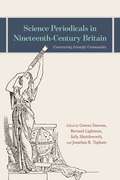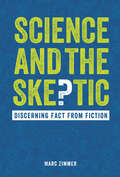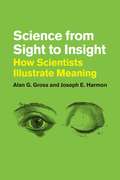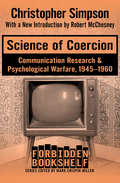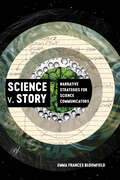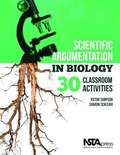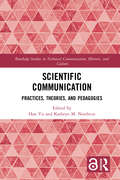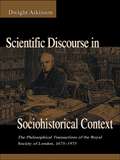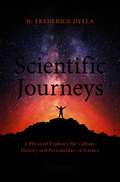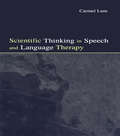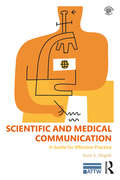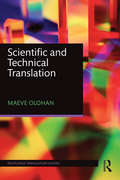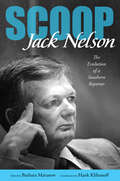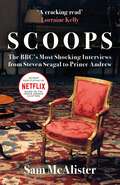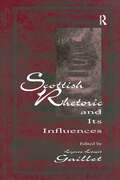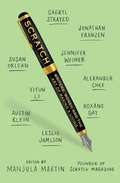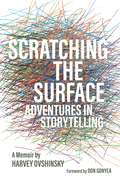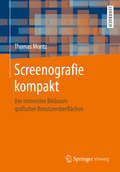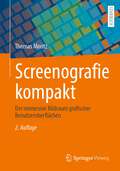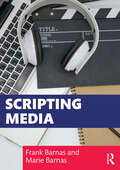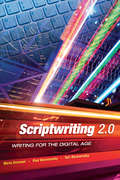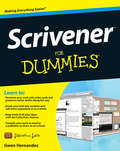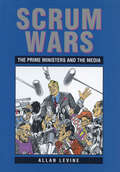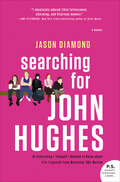- Table View
- List View
Science Periodicals in Nineteenth-Century Britain: Constructing Scientific Communities
by Sally Shuttleworth Bernard Lightman Gowan Dawson Jonathan R. TophamPeriodicals played a vital role in the developments in science and medicine that transformed nineteenth-century Britain. Proliferating from a mere handful to many hundreds of titles, they catered to audiences ranging from gentlemanly members of metropolitan societies to working-class participants in local natural history clubs. In addition to disseminating authorized scientific discovery, they fostered a sense of collective identity among their geographically dispersed and often socially disparate readers by facilitating the reciprocal interchange of ideas and information. As such, they offer privileged access into the workings of scientific communities in the period. The essays in this volume set the historical exploration of the scientific and medical periodicals of the era on a new footing, examining their precise function and role in the making of nineteenth-century science and enhancing our vision of the shifting communities and practices of science in the period. This radical rethinking of the scientific journal offers a new approach to the reconfiguration of the sciences in nineteenth-century Britain and sheds instructive light on contemporary debates about the purpose, practices, and price of scientific journals.
Science and the Skeptic: Discerning Fact from Fiction
by Marc ZimmerFake news, pseudoscience, and quackery have become scourges, spreading through society from social media all the way to Congress. The line between entertainment and reality, between fact and fiction, has become blurred. Some of the most crucial issues of our time—climate change, vaccines, and genetically modified organisms—have become prime targets for nefarious disinformation campaigns. Far too many people have become distrustful of real science. Even those who still trust science no longer know what to believe or how to identify the truth. Not only does this result in the devaluation and distrust of real science, but it is also dangerous: people acting based on false information can hurt themselves or those around them. We must equip ourselves with the knowledge and skills to fight back against all this disinformation. InScience and the Skeptic: Discerning Fact from Fiction, you will learn how science is done, from the basic scientific method to the vetting process that scientific papers must go through to become published; how and why some people intentionally or unintentionally spread misinformation; and the dangers in believing and spreading false information. You'll also find twenty easy-to-follow rules for distinguishing fake science from the real deal. Armed with this book, empower yourself with knowledge, learning what information to trust and what to dismiss as deceit. "We're not just fighting an epidemic; we're fighting an infodemic. . . . This is a time for facts, not fear. This is a time for rationality, not rumors. This is a time for solidarity, not stigma."—Tedros Adhanom Ghebreyesus, director-general of the WHO "Our deepest beliefs should help navigate reality, not determine it."—Michael Gersen, The Washington Post "Journalism is very much about trying to simplify and distribute information about what's new and where advances have been made. That's incompatible with the scientific process, which can take a long time to build a body of evidence."—Kelly McBride, Poynter Institute
Science from Sight to Insight: How Scientists Illustrate Meaning
by Alan G. Gross Joseph E. HarmonJohn Dalton’s molecular structures. Scatter plots and geometric diagrams. Watson and Crick’s double helix. The way in which scientists understand the world—and the key concepts that explain it—is undeniably bound up in not only words, but images. Moreover, from PowerPoint presentations to articles in academic journals, scientific communication routinely relies on the relationship between words and pictures. In Science from Sight to Insight, Alan G. Gross and Joseph E. Harmon present a short history of the scientific visual, and then formulate a theory about the interaction between the visual and textual. With great insight and admirable rigor, the authors argue that scientific meaning itself comes from the complex interplay between the verbal and the visual in the form of graphs, diagrams, maps, drawings, and photographs. The authors use a variety of tools to probe the nature of scientific images, from Heidegger’s philosophy of science to Peirce’s semiotics of visual communication. Their synthesis of these elements offers readers an examination of scientific visuals at a much deeper and more meaningful level than ever before.
Science of Coercion: Communication Research & Psychological Warfare, 1945–1960 (Forbidden Bookshelf #13)
by Christopher SimpsonA provocative and eye-opening study of the essential role the US military and the Central Intelligence Agency played in the advancement of communication studies during the Cold War era, now with a new introduction by Robert W. McChesney and a new preface by the author Since the mid-twentieth century, the great advances in our knowledge about the most effective methods of mass communication and persuasion have been visible in a wide range of professional fields, including journalism, marketing, public relations, interrogation, and public opinion studies. However, the birth of the modern science of mass communication had surprising and somewhat troubling midwives: the military and covert intelligence arms of the US government. In this fascinating study, author Christopher Simpson uses long-classified documents from the Pentagon, the CIA, and other national security agencies to demonstrate how this seemingly benign social science grew directly out of secret government-funded research into psychological warfare. It reveals that many of the most respected pioneers in the field of communication science were knowingly complicit in America&’s Cold War efforts, regardless of their personal politics or individual moralities, and that their findings on mass communication were eventually employed for the purposes of propaganda, subversion, intimidation, and counterinsurgency. An important, thought-provoking work, Science of Coercion shines a blazing light into a hitherto remote and shadowy corner of Cold War history.
Science v. Story: Narrative Strategies for Science Communicators
by Emma Frances BloomfieldUncovering common threads across types of science skepticism to show why these controversial narratives stick and how we can more effectively counter them through storytelling Science v. Story analyzes four scientific controversies—climate change, evolution, vaccination, and COVID-19—through the lens of storytelling. Instead of viewing stories as adversaries to scientific practices, Emma Frances Bloomfield demonstrates how storytelling is integral to science communication. Drawing from narrative theory and rhetorical studies, Science v. Story examines scientific stories and rival stories, including disingenuous rival stories that undermine scientific conclusions and productive rival stories that work to make science more inclusive. Science v. Story offers two tools to evaluate and build stories: narrative webs and narrative constellations. These visual mapping tools chart the features of a story (i.e., characters, action, sequence, scope, storyteller, and content) to locate opportunities for audience engagement. Bloomfield ultimately argues that we can strengthen science communication by incorporating storytelling in critical ways that are attentive to audience and context.
Scientific Argumentation In Biology: 30 Classroom Activities
by Victor Sampson Sharon SchleighDevelop your high school students' understanding of argumentation and evidence-based reasoning with this comprehensive book. Like three guides in one, Scientific Argumentation in Biology combines theory, practice, and biology content. It starts by giving you solid background in why students need to be able to go beyond expressing mere opinions when making research-related biology claims. Then it provides 30 thoroughly field-tested activities your students can use when learning to: propose, support, and evaluate claims; validate or refute them on the basis of scientific reasoning; and craft complete written arguments. Detailed teacher notes suggest specific ways in which you can use the activities to enrich and supplement (not replace) what you're doing in biology class already. Scientific Argumentation is an invaluable resource for learning more about argumentaion and designed related lessons. You'll find it ideal for helping your students learn standards-based content; improve their biological practices; explain, interpret, and evaluate evidence; and acquire the habits of mind to become proficient in science.
Scientific Communication: Practices, Theories, and Pedagogies (Routledge Studies in Technical Communication, Rhetoric, and Culture)
by Han Yu Kathryn M. NorthcutThis book addresses the roles and challenges of people who communicate science, who work with scientists, and who teach STEM majors how to write. In terms of practice and theory, chapters address themes encountered by scientists and communicators, including ethical challenges, visual displays, and communication with publics, as well as changed and changing contexts and genres. The pedagogy section covers topics important to instructors’ everyday teaching as well as longer-term curricular development. Chapters address delivery of rhetorically informed instruction, communication from experts to the publics, writing assessment, online teaching, and communication-intensive pedagogies and curricula.
Scientific Discourse in Sociohistorical Context: The Philosophical Transactions of the Royal Society of London, 1675-1975 (Rhetoric, Knowledge, and Society Series)
by Dwight AtkinsonScientific Discourse in Sociohistorical Context represents the intersection of knowledge and method, examined from the perspective of three distinct disciplines: linguistics, rhetoric-composition, and history. Herein, Dwight Atkinson describes the written language and rhetoric of the Royal Society of London, based on his analysis of its affiliated journal, The Philosophical Transactions, starting with the 17th century advent of modern empirical science through to the present day. Atkinson adopts two independent approaches to the analysis of written discourse--from the fields of linguistics and rhetoric-composition--and then integrates and interprets his findings in light of the history of the Royal Society and British science. Atkinson's study provides the most complete and particular institutional account of a scientific journal, which in this case is a publication that stands as an icon of scientific publication. He supplies his readers with important material found nowhere else in the historical literature, including details about the operation of the journal and its relation to the society. The work embeds the history of the journal and its editors within the history of the Royal Society and other developments in science and society. The synthesis of historical, linguistic, rhetorical, and cultural analysis makes visible certain complex communicative dynamics that could not previously be seen from a single vantage point. The work presented here reinforces how deep historical examinations of linguistic and rhetorical practices have direct bearing on how and what scholars read and write now. Most significantly, this volume demonstrates how these historical activities need to inform current teaching of and thinking about language.
Scientific Journeys: A Physicist Explores the Culture, History and Personalities of Science
by H. Frederick DyllaThis collection of essays traces a scientific journey bookmarked by remarkable mentors and milestones of science. It provides fascinating reading for everyone interested in the history, public appreciation, and value of science, as well as giving first-hand accounts of many key events and prominent figures. The author was one of the “sputnik kids” growing up in the US at the start of the space age. He built a working laser just two years after they were first invented, an experience that convinced him to become a physicist. During his 50-year career in physics, many personalities and notable events in science and technology helped to form his view of how science contributes to the modern world, including his conviction that the impact of science can be most effective when introduced within the context of the humanities - especially history, literature and the arts.From the Foreword by former U.S. Congressman, Rush D. Holt: In this volume, we have the wide-ranging thoughts and observations of Fred Dylla, an accomplished physicist with an engineer’s fascination for gadgets, a historian’s long perspective, an artist’s aesthetic eye, and a teacher’s passion for sharing ideas. Throughout his varied career [...] his curiosity has been his foremost characteristic and his ability to see the connection between apparently disparate things his greatest skill. [...] Here he examines the roots and growth of innovation in examples from Bell Laboratories, Edison Electric Light Company, and cubist painter Georges Braque. He considers the essential place of publishing in science, that epochal intellectual technique for learning how the world works. He shows the human enrichment and practical benefits that derive from wise investments in scientific research, as well as the waste resulting from a failure to embrace appropriate technologies.
Scientific Thinking in Speech and Language Therapy
by Carmel LumSpeech and language pathologists, like all professionals who claim to be scientific in their practice, make a public commitment to operate on the basis of knowledge derived in accordance with sound scientific standards. Yet students in communication disorders are given relatively little grounding in the fundamentals of science; indeed, they often receive implicit encouragement to rely on clinical wisdom. This pathbreaking text introduces the principles of critical scientific thinking as they relate to assessing communication problems, deciding about alternative approaches to intervention, and evaluating outcomes. The author provides many illustrative examples to help readers contextualize the ideas. Her clear presentation will help not only undergraduate and graduate students but also established professionals reason more effectively about what they are doing and why. Though the examples come from speech and language pathology, this illuminating and readable book constitutes a valuable resource for all clinical practitioners.
Scientific and Medical Communication: A Guide for Effective Practice (ATTW Series in Technical and Professional Communication)
by Scott A. MogullScientific and Medical Communication: A Guide for Effective Practice prepares readers to effectively communicate in professional scientific communities. The material in this book is firmly grounded in more than 500 published research findings and editorials by scientific writers, authors, and journal editors. Thus, this text provides the broadest and most comprehensive analysis of scientific writing. In addition, carefully selected and thoroughly annotated examples from the scientific and medical literature demonstrate the recommendations covered in the text. These real-world examples were carefully selected so that the scientific content can be understood by those without a detailed background in any particular scientific or medical field—thus clearly illustrating the content organization and writing style. This text will prepare individuals to write and edit scientific manuscripts, conference abstracts, posters, and press releases according to journal and professional standards. Readers will also learn to conduct effective searches of the scientific and medical literature, as well as proper citation practices.
Scientific and Technical Translation (Routledge Translation Guides)
by Maeve OlohanRoutledge Translation Guides cover the key translation text types and genres and equip translators and students of translation with the skills needed to translate them. Concise, accessible and written by leading authorities, they include examples from existing translations, activities, further reading suggestions and a glossary of key terms. Scientific and Technical Translation focuses on texts that are typically translated in scientific and technical domains, such as technical instructions, data sheets and brochures, patents, scientific research articles and abstracts, popular science press releases and news reports. In seven chapters, this practical textbook: Introduces readers to the typical contexts in which scientific and technical translators work; Shows how corpus resources can be used for terminological and phraseological research; Considers how translation technologies are employed in technical and scientific translation; Explains a range of technical and scientific genres and their translation. Including a wide range of relevant tasks and activities, examples from the most commonly taught language pairs and a glossary of key terms, this is the essential textbook for modules on scientific and technical translation and specialised translation.
Scoop: The Evolution of a Southern Reporter
by Jack NelsonFrom a gullible cub reporter with the Daily Herald in Biloxi and Gulfport, to the pugnacious Pulitzer Prize winner at the Atlanta Constitution, to the peerless beat reporter for the Los Angeles Times covering civil rights in the South, Jack Nelson (1929–2009) was dedicated to exposing injustice and corruption wherever he found it. Whether it was the gruesome conditions at a twelve-thousand-bed mental hospital in Georgia or the cruelties of Jim Crow inequity, Nelson proved himself to be one of those rare reporters whose work affected and improved thousands of lives. His memories about difficult circumstances, contentious people, and calamitous events provide a unique window into some of the most momentous periods in southern and U.S. history. Wherever he landed, Nelson found the corruption others missed or disregarded. He found it in lawless Biloxi; he found it in buttoned-up corporate Atlanta; he found it in the college town of Athens, Georgia. Nelson turned his investigations of illegal gambling, liquor sales, prostitution, shakedowns, and corrupt cops into such a trademark that honest mayors and military commanders called on him to expose miscreants in their midst. Once he realized that segregation was another form of corruption, he became a premier reporter of the civil rights movement and its cast of characters, including Martin Luther King Jr., Stokely Carmichael, Alabama’s Sheriff Jim Clarke, George Wallace, and others. He was, through his steely commitment to journalism, a chronicler of great events, a witness to news, a shaper and re-shaper of viewpoints, and indeed one of the most important journalists of the twentieth century.
Scoops: Behind the Scenes of the BBC's Most Shocking Interviews
by Sam McAlister&‘Riveting&’ Sunday Telegraph &‘Behind every great interview is a great booker – Sam McAlister is one of the unsung heroes of television news&’ Piers Morgan She is the woman who clinched the 2019 interview with Prince Andrew, described as &‘a plane crashing into an oil tanker, causing a tsunami, triggering a nuclear explosion&’. She is many things beside: the first in her family to go to university; a trained barrister; a single mum; a master of persuasion. In her former BBC colleagues&’ words, she was the &‘booker extraordinaire&’, responsible for many of Newsnight&’s exclusives over the past decade, including Stormy Daniels, Sean Spicer, Brigitte Höss, Steven Seagal, Mel Greig and Julian Assange. After 12 years producing content for Newsnight, McAlister reflects with candour on her experience, sharing not just the secrets of how the best news gets made, but also the changes to the BBC, the future of &‘mainstream media&’ in the age of clickbait and the role of power and privilege in shaping our media landscape. This is a backstage pass to the most unforgettable journalism of our times.
Scottish Rhetoric and Its Influences
by Lynee Lewis GailletAn outgrowth of the recent meeting of the International Society of the History of Rhetoric, this collection challenges the reader to reexamine the broad influence of 18th- and 19th-century Scottish rhetoric, often credited for shaping present-day studies in psychology, philosophy, literary criticism, oral communication, English literature, and composition. The contributors examine its influence and call for a new appraisal of its importance in light of recent scholarship and archival research. Many of the essays in the first section discuss the contributions of recognized influential figures including Adam Smith and Hugh Blair. Other essays focus on the importance of 18th-century Scottish sermons in relation to public discourse, audience analysis, peer evaluation, and professional rhetoric. Essays in the second section address 19th-century rhetorical theory and its influence on North American composition practice.
Scratch: Writers, Money, and the Art of Making a Living
by Manjula MartinA collection of essays from today’s most acclaimed authors—from Cheryl Strayed to Roxane Gay to Jennifer Weiner, Alexander Chee, Nick Hornby, and Jonathan Franzen—on the realities of making a living in the writing world.In the literary world, the debate around writing and commerce often begs us to take sides: either writers should be paid for everything they do or writers should just pay their dues and count themselves lucky to be published. You should never quit your day job, but your ultimate goal should be to quit your day job. It’s an endless, confusing, and often controversial conversation that, despite our bare-it-all culture, still remains taboo. In Scratch, Manjula Martin has gathered interviews and essays from established and rising authors to confront the age-old question: how do creative people make money? As contributors including Jonathan Franzen, Cheryl Strayed, Roxane Gay, Nick Hornby, Susan Orlean, Alexander Chee, Daniel Jose Older, Jennifer Weiner, and Yiyun Li candidly and emotionally discuss money, MFA programs, teaching fellowships, finally getting published, and what success really means to them, Scratch honestly addresses the tensions between writing and money, work and life, literature and commerce. The result is an entertaining and inspiring book that helps readers and writers understand what it’s really like to make art in a world that runs on money—and why it matters. Essential reading for aspiring and experienced writers, and for anyone interested in the future of literature, Scratch is the perfect bookshelf companion to On Writing, Never Can Say Goodbye, and MFA vs. NYC.
Scratching the Surface: Adventures in Storytelling (Painted Turtle)
by Harvey OvshinskyScratching the Surface: Adventures in Storytelling is a deeply personal and intimate memoir told through the lens of Harvey Ovshinsky’s lifetime of adventures as an urban enthusiast. He was only seventeen when he started The Fifth Estate, one of the country’s oldest underground newspapers. Five years later, he became one of the country’s youngest news directors in commercial radio at WABX-FM, Detroit’s notorious progressive rock station. Both jobs placed Ovshinsky directly in the bullseye of the nation’s tumultuous counterculture of the 1960s and 70s. When he became a documentary director, Ovshinsky’s dispatches from his hometown were awarded broadcasting’s highest honors, including a national Emmy, a Peabody, and the American Film Institute’s Robert M. Bennett Award for Excellence. But this memoir is more than a boastful trip down memory lane. It also doubles as a survival guide and an instruction manual that speaks not only to the nature of and need for storytelling but also and equally important, the pivotal role the twin powers of endurance and resilience play in the creative process. You don’t have to be a writer, an artist, or even especially creative to take the plunge, Ovshinsky reminds his readers. "You just have to feel strongly about something or have something you need to get off your chest. And then find the courage to scratch your own surface and share your good stuff with others." Above all, Ovshinsky is an educator, known for his passionate support of and commitment to mentoring the next generation of urban storytellers. When he wasn’t teaching screenwriting and documentary production in his popular workshops and support groups, he taught undergraduate and graduate students at Detroit’s College for Creative Studies, Wayne State University, Madonna University, and Washtenaw Community College. "The thing about Harvey," a colleague recalls in Scratching the Surface, "is that he treats his students like professionals and not like newbies at all. His approach is to, in a very supportive and non-threatening way, combine both introductory and advanced storytelling in one fell swoop."
Screenografie kompakt: Der immersive Bildraum grafischer Benutzeroberflächen
by Thomas MoritzDieses Buch behandelt die Screenografie von grafischen Benutzeroberflächen basierend auf einem didaktisch strukturierten Lehrprogramm, dessen Kapitel inhaltlich aufeinander aufbauen und jeweils in einem zusammenfassenden Fazit enden. Nach einer einführenden thematischen Motivation werden wahrnehmungspsychologische und kommunikationswissenschaftliche Grundlagen des Systemischen Designs erläutert, dessen Spezifik für die systematische Entwicklung grafischer Benutzeroberflächen essentiell ist. Im Kontext immersiver Raumnutzung wird u.a. illustriert, wie ein Screen morphologisch in kleinere geometrische Einheiten unterteilbar ist, die als visuelles Ganzes die ideale Basis für ein visuelles Gestaltungsraster bilden, welches den immersiven Bildraum strukturiert und organisiert. Es werden nutzerspezifische Farbgebungen für ein visuelles Ambiente aufgezeigt, das einem speziellen Nutzernaturell entspricht, da es auf Erfahrungen mit natürlichen Umgebungen basiert und über alle geografischen und ethnologischen Grenzen hinweg stimuliert und zur interaktiven Nutzung motiviert.
Screenografie kompakt: Der immersive Bildraum grafischer Benutzeroberflächen
by Thomas MoritzDieses Lehrprogramm zur systematischen Gestaltung eines interaktiv nutzbaren Bildschirms (Screen) erläutert wahrnehmungspsychologische und kommunikationswissenschaftliche Grundlagen, die für das Systemische Design grafischer Benutzeroberflächen (Graphical User Interfaces) relevant sind. Im Kontext interaktiver Raumnutzung wird illustriert, wie die Bildschirmfläche morphologisch in Form eines visuellen Gestaltungsrasters (Visual Design Pattern) zu gliedern ist, das den immersiven Bildraum der grafischen Benutzeroberfläche strukturiert und die interaktive Nutzung erleichtert. Es werden mögliche Farbkombinationen für ein visuelles Ambiente definiert, deren Wirkungsweise auf natürlichen Erfahrungswerten basiert und somit einem speziellen Nutzernaturell entspricht, dessen Charakteristika weltweit identisch sind.
Scripting Media
by Frank Barnas Marie BarnasBringing together professional standards, practices, and jargon from across the industry, Scripting Media provides a complete overview of writing for divergent forms of media. While some forms of media writing have been honed and standardized over generations, others demand new ways of thinking and collaborating. Covering traditional forms of scriptwriting, such as news, advertising, and film scripting, as well as newer and more emerging areas of social media and virtual reality, this book is designed to prepare readers for the varying formats, styles, and techniques specific to each medium. Each chapter contains a list of key terms, an historical overview of the area, and technical specifications for students to be aware of. Exercises, essay prompts, and online links help reinforce students’ knowledge and provide avenues for private study. Written in an accessible and engaging style by two renowned media practitioners, authors, and teachers, Scripting Media is essential reading for students approaching media writing for the first time.
Scripting Media
by Frank Barnas Marie BarnasBringing together professional standards, practices, and jargon from across the industry, Scripting Media provides a complete overview of writing for divergent forms of media.While some forms of media writing have been honed and standardized over generations, others demand new ways of thinking and collaborating. Covering traditional forms of scriptwriting, such as news, advertising, and film scripting, as well as newer and more emerging areas of social media and virtual reality, this book is designed to prepare readers for the varying formats, styles, and techniques specific to each medium. Each chapter contains a list of key terms, an historical overview of the area, and technical specifications for students to be aware of. Exercises, essay prompts, and online links help reinforce students’ knowledge and provide avenues for private study.Written in an accessible and engaging style by two renowned media practitioners, authors, and teachers, Scripting Media is essential reading for students approaching media writing for the first time.
Scriptwriting 2.0: Writing for the Digital Age
by Marie DrennanOnline media is and will continue to be at the forefront of entertainment; this book introduces readers to this new world and helps them create good content for it. It is a compact, practical guide for those who want to explore scriptwriting for the digital age while also learning essential skills and techniques central to new media writing. Scriptwriting 2.0 contains advice on writing both short- and long-form webisodes as part of a series, as well as standalone pieces. It then goes beyond the writing process to discuss revising, production, promotion and copyright. It is written in a friendly, readable and jargon-free style and includes real-world examples from successful series and a sample script. Readers can access full episodes of the two series discussed at length as well as samples from several other web series.
Scrivener For Dummies
by Gwen HernandezNo matter what you want to write, Scrivener makes it easier. Whether you're a planner, a seat-of-the-pants writer, or something in between, Scrivener provides tools for every stage of the writing process. Scrivener For Dummies walks you step-by-step through this popular writing software's best features. This friendly For Dummies guide starts with the basics, but even experienced scriveners will benefit from the helpful tips for getting more from their favourite writing software.Walks you through customizing project templates for your project needsOffers useful advice on compiling your project for print and e-book formats Helps you set up project and document targets and minimize distractions to keep you on track and on deadlineExplains how to storyboard with the corkboard, create collections, and understand their valueShows you how to use automated backups to protect your hard work along the wayFrom idea inception to manuscript submission, Scrivener for Dummies makes it easier than ever to plan, write, organize, and revise your masterpiece in Scrivener.
Scrum Wars: The Prime Ministers and the Media
by Allan LevineThe image of the scrum – a beleaguered politican surrounded by jockeying reporters – is central to our perception of Ottawa. The modern scrum began with the arrival of television, but even in Sir John A. Macdonald’s day, a century earlier, reporters in the parliamentary press gallery had waited outside the prime minister’s office, pen in hand, hoping for a quote for the next edition. The scrum represents the test of wills, the contest of wits, and the battle for control that have characterized the relationship between Canadian prime ministers and journalists for more than 125 years. Scrum Wars chronicles this relationship. It is an anecdotal as well as analytical account, showing how earlier prime ministers like Sir John A. Macdonald and Sir Wilfrid Laurier were able to exercise control over what was written about their administrators, while more recent leaders like John Diefenbaker, Joe Clark, John Turner, and Brian Mulroney often found themselves at the mercy of intense media scrutiny and comment.
Searching for John Hughes: Or Everything I Thought I Needed to Know about Life I Learned from '80s Movies
by Jason DiamondSearching for John Hughes is Jason Diamond’s hilarious memoir of growing up obsessed with the iconic filmmaker’s movies.From the outrageous, raunchy antics in National Lampoon’s Vacation to the teenage angst in The Breakfast Club and Pretty in Pink to the insanely clever and unforgettable Home Alone, Jason Diamond could not get enough of John Hughes’ films. So, he set off on a years-long delusional, earnest, and assiduous quest to write a biography of his favorite filmmaker, despite having no qualifications, training, background, platform, or direction. In Searching for John Hughes, Jason tells how a Jewish kid from a broken home in a Chicago suburb—sometimes homeless, always restless—found comfort and connection in the likewise broken lives in the suburban Chicago of John Hughes’ oeuvre. He moved to New York to become a writer of a book he had no business writing. In the meantime, he brewed coffee and guarded cupcake cafes. All the while, he watched John Hughes movies religiously.Though his original biography of Hughes has long since been abandoned, Jason has discovered he is a writer through and through. And the adversity of going for broke has now been transformed into wisdom. Or, at least, a really, really good story.In other words, this is a memoir of growing up. One part big dream, one part big failure, one part John Hughes movies, one part Chicago, and one part New York. It’s a story of what comes after the “Go for it!” part of the command to young creatives to pursue their dreams—no matter how absurd they might seem at first.
